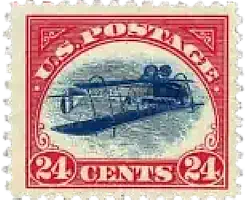
Stamp Collecting – A Fun and Rewarding Hobby
Stamp collecting—also known as philately—is one of the most rewarding and educational hobbies in the world. For over 180 years, people of all ages have enjoyed the thrill of discovering new stamps, uncovering postal history, and building collections that tell stories. Today, collecting stamps is not only a window into world culture and history, but in some cases, it can even be a profitable pursuit.
Why Start a Stamp Collection?
Stamp collecting offers something for everyone. Whether you're interested in history, geography, art, politics, or rare items, there is a corner of the stamp world that suits you. Beginners often start with basic commemorative stamps, while advanced collectors may focus on a particular country, time period, or theme—like animals, space, or royalty.
Beyond the fun, stamps can hold and increase in value over time. Some collectors specialize in rare error stamps or historical issues that are highly sought after at auction. If treated carefully and stored properly, your collection could become an investment over time.
Getting Started: Tips for Beginners
- Pick a Theme or Country: Beginners often find it easier to focus on a single country, like the United States, or a theme such as wildlife or transportation.
- Start with a Starter Kit: You can purchase a beginner’s stamp collecting kit that includes tongs, a magnifying glass, hinges, and a basic album.
- Join a Stamp Club: Local and online philatelic clubs offer support, trading opportunities, and expert guidance.
- Buy from Reputable Sources: Whether online or at shows, only buy from trusted dealers who provide clear descriptions and fair pricing.
- Learn to Identify Stamps: Understanding watermarks, perforations, paper types, and gum conditions can help determine a stamp’s rarity and value.
Famous Rare Stamps from Around the World
Some stamps are so rare that they’ve become legends. Here are a few famous examples:
- British Guiana 1856 1 Cent Magenta: The rarest stamp in the world, last sold for nearly $9 million.
- Mauritius 1847 Post Office Stamps: Among the first colonial issues, famously misprinted with “Post Office” instead of “Post Paid.”
- Swedish Treskilling Yellow: A color error that made this stamp one of a kind—and extremely valuable.
Famous Rare U.S. Stamps to Watch For
- Inverted Jenny (1918): This stamp features an upside-down airplane and is considered the most iconic U.S. stamp error.
- 1c Benjamin Franklin Vertical Pair (1908-1909): Known for its rare double-line watermark.
- 30c Shield, Eagle, and Flags (1869): A patriotic design and a favorite among 19th-century collectors.
Watch: What Makes Stamps Valuable?
Here’s a helpful video that explains how collectors determine stamp value, and what traits make stamps highly collectible:
This video offers tips for spotting value in U.S. stamps and understanding the basics of philately.
Where to Buy Stamps and Supplies
Whether you’re starting or expanding a collection, you’ll need a reliable source for both stamps and collecting tools. Here are a few recommended websites:
- Jamestown Stamp Company – Offers approval services and club plans for stamp collectors.
- Kenmore Stamp – A trusted source for over 80 years, with beginner kits and stamp packets.
- iHobb – Specializing in stamp albums, mounts, catalogs, and tweezers.
Disclosure: Some links may be affiliate links. We may earn a small commission if you purchase through them, at no additional cost to you.
Resources for Further Learning
If you want to go deeper into stamp collecting and postal history, the following resources are invaluable:
- Philately - Wikipedia
- American Philatelic Research Library
- Philatelic Research – A Basic Guide (PDF)
Is Stamp Collecting Profitable?
While most stamp collectors begin for the love of the hobby, some stamps can become quite valuable over time. Factors that affect value include:
- Rarity: Fewer known copies increase value.
- Condition: Centering, perforation quality, and gum affect grade.
- Demand: Thematic or historical interest can drive popularity.
- Errors or Misprints: Like the Inverted Jenny, production errors often fetch top dollar.
Some U.S. stamps have sold for tens or even hundreds of thousands of dollars. The 1851 2-cent Hawaiian Missionary stamp, for example, sold for $600,000. However, remember that most stamps are valued in the $1 to $20 range and collecting should primarily be for enjoyment.
Explore More Collectibles
Love collecting rare items? You might also enjoy learning about:

 '
' 




